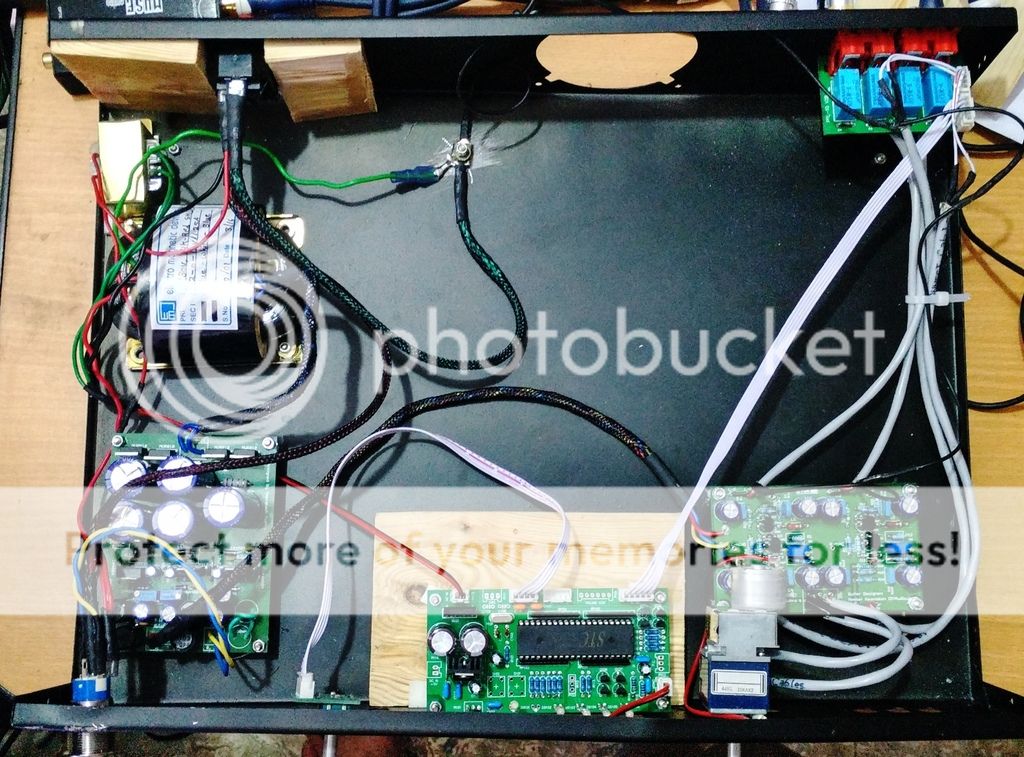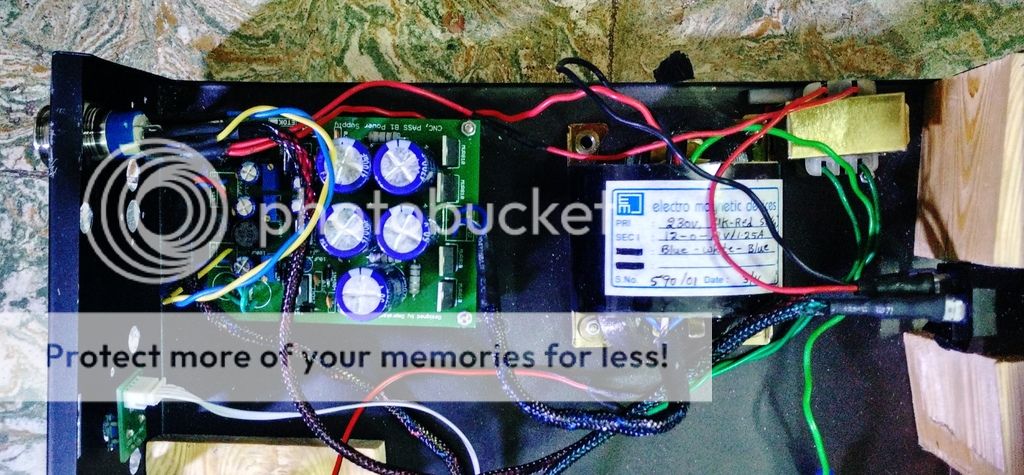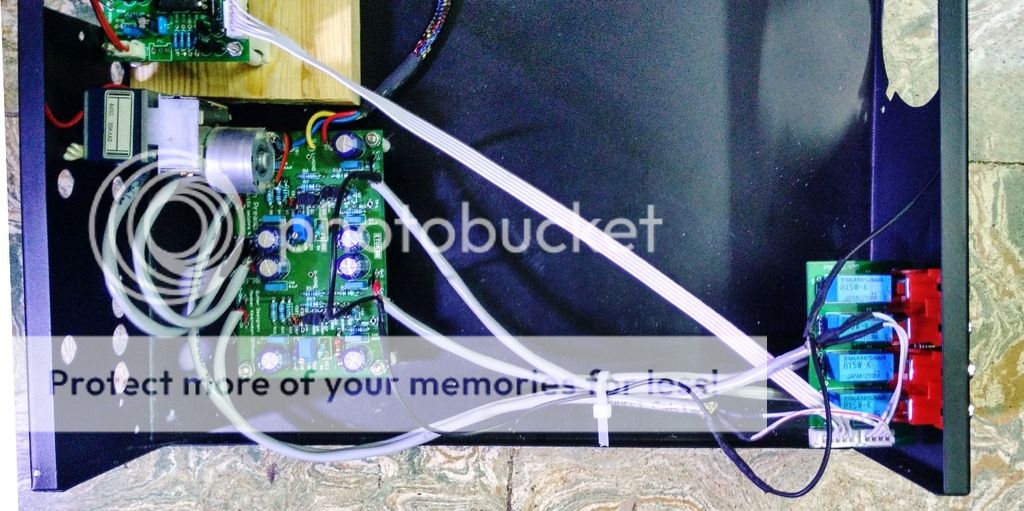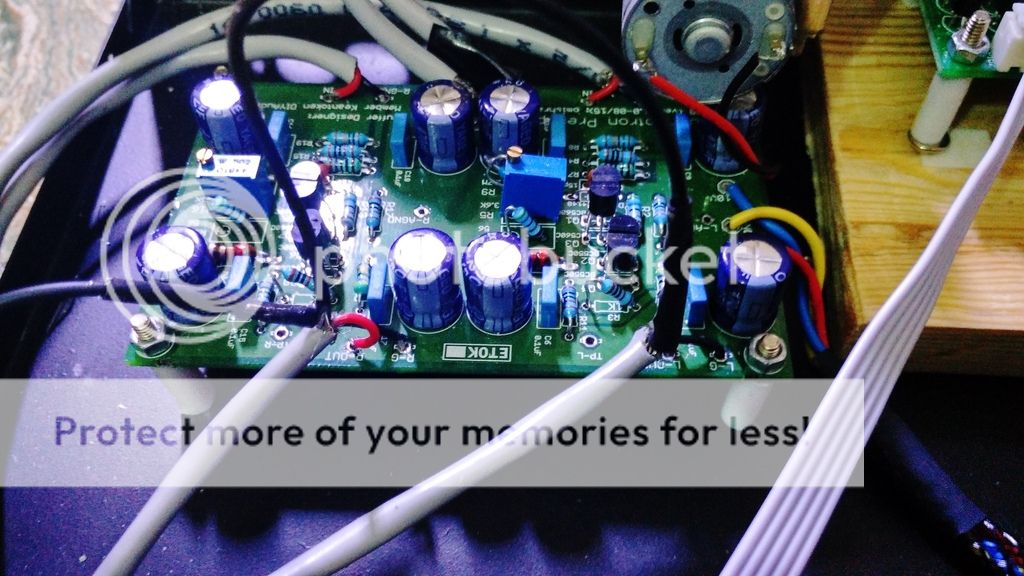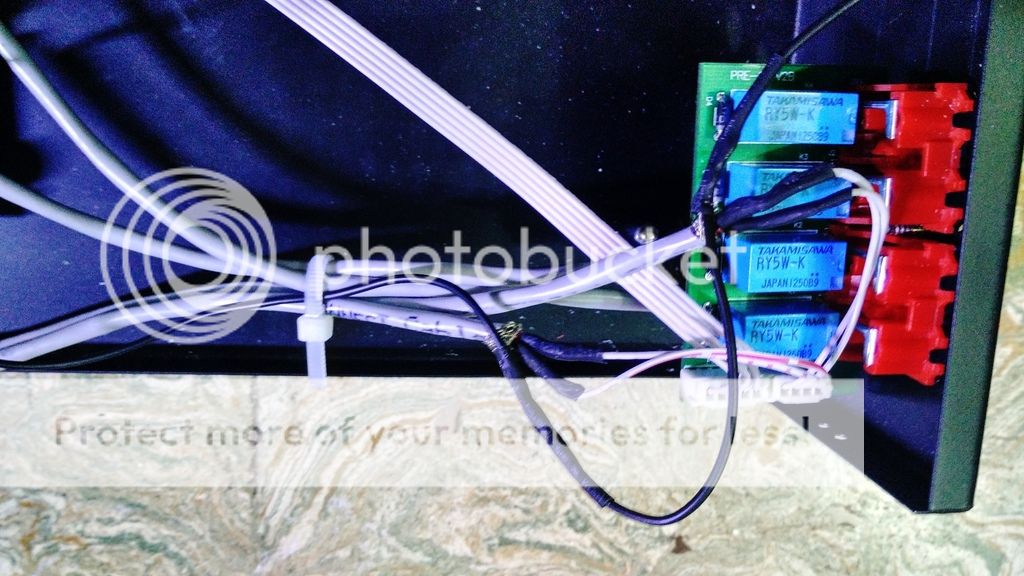finally, finished mounting pcbs onto the chassis. there seems to be some loose soldering on PSU board. music stopped playing midway. after rechecking the connection it has been working fine.
-i've followed Joshua's advise of shielded cable use for signal path and the grounding one end to power ground [hope the connections are correct!]
-i've tried to isolate the power circuitry from the signal wire/buffer pcb as much as possible
-i could adjust the second DC output on PSU to 3Volts: perfect for power button LED!
i know wiring is a mees, but this is the best i could do with the available time and patience!
the IR sensor and source input indicator board is raised on a wooden platform -right now held in place with 3M double sided tape.
tiny trafo is for 9V AC input meant for Source Selector module:
signal wires. though i had ordered Neutric RCA jacks for signal output, i found MX Connectors better built hence used them [not visible in pic].
also you can see the grounding cable [black]
closer look of the grounding:
Buffer board as source,
source selector as source,
buffer board with ALPS pot connected using the shielded wire:
preamp is yet to get a fascia - cosmetically it looks crude.


